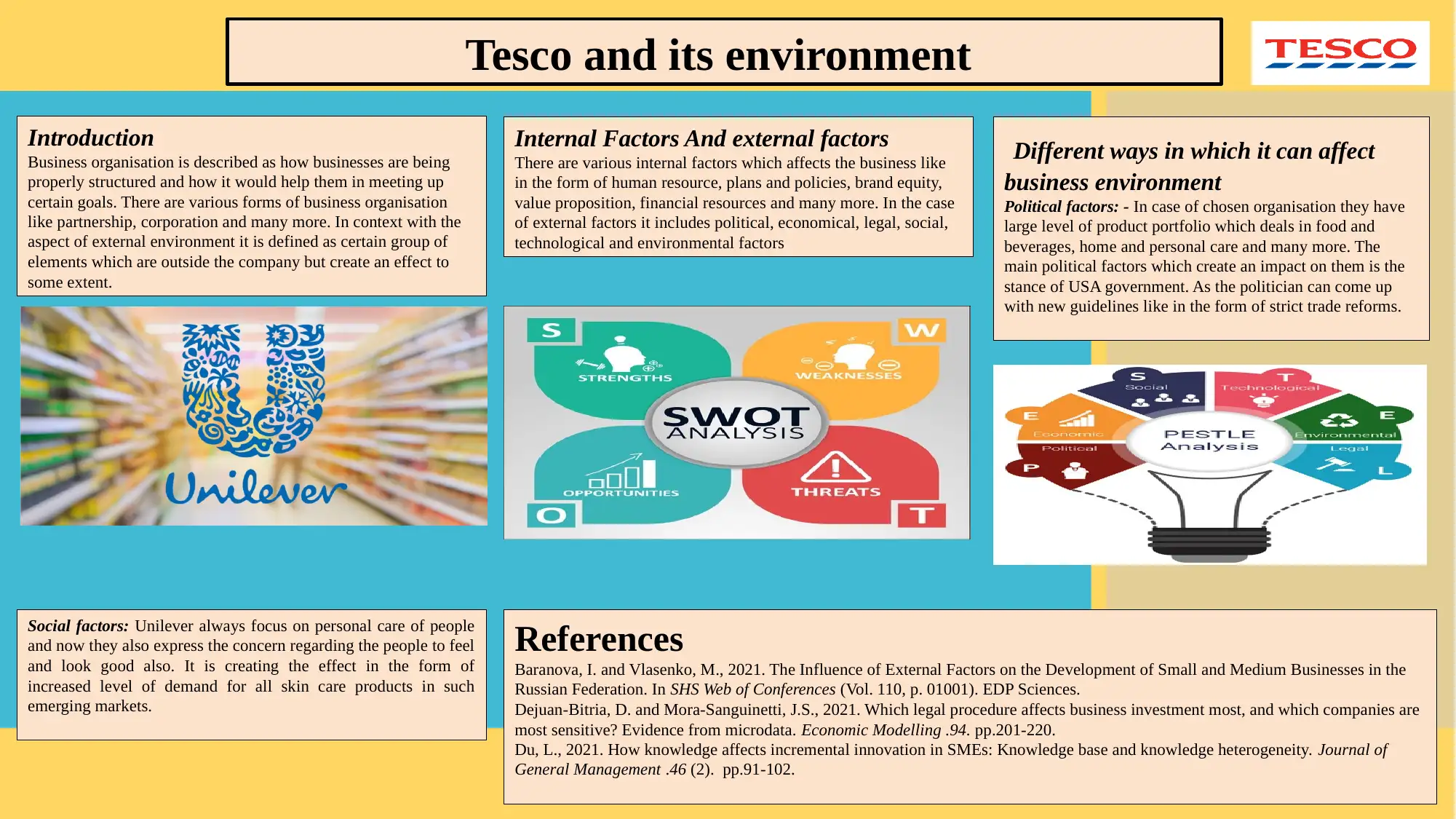Tesco's Business Environment: Comprehensive Analysis of Key Factors
VerifiedAdded on 2023/06/18
|1
|367
|399
Essay
AI Summary
This essay provides an analysis of Tesco's business environment, focusing on both internal and external factors that influence its operations. It begins by defining business organization and the impact of the external environment. Internal factors such as human resources, plans, policies, brand equity, value proposition, and financial resources are considered. The analysis also covers external factors, specifically political and social elements, and their effects on Tesco. Political factors include the influence of government policies and trade reforms, while social factors involve consumer behavior and demand for products. The essay references academic sources to support its examination of these factors and their implications for Tesco's business strategy and performance.







![[object Object]](/_next/static/media/star-bottom.7253800d.svg)